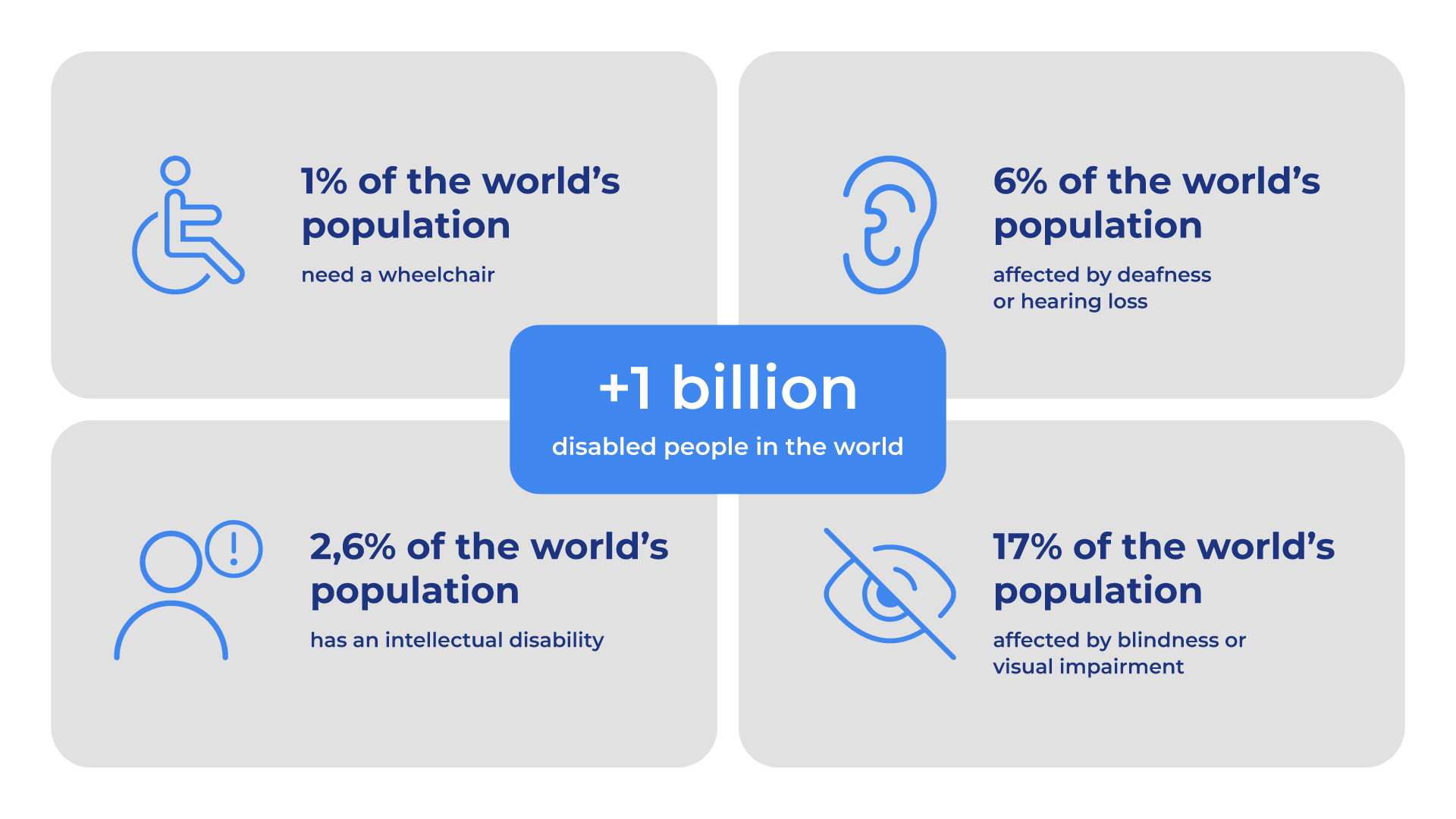5 SECONDS-SUMMARY:
- Can you imagine how tough it is to want to navigate online, read an article or see the colour of a product and not be able to do it?
- These are some of the actualities for those facing one of the main challenges of digital transformation – lack of accessibility.
- This article will explore the critical criteria of accessibility for digital products and explain how businesses can adapt to meet these standards.
The WHO (World Health Organization) say that more than 70 per cent of digital products and services are not adapted for people with visual and cognitive disabilities. So, it’s vital to raise business awareness around upgrading and improving digital channels.
When we approach a topic as important as this, we should bear in mind some of the basic principles underpinning an inclusive society – equal opportunities, autonomy and respect. But how do we build these principles into businesses with a digital presence? One of the first steps is implementing criteria and inclusive policies that facilitate the provision of accessible digital products to everyone.
Who needs digital accessibility?
Consider the following: approximately 16 per cent of the global population experience some sort of incapacity. The number of people with unique visual and functional disabilities is diverse, therefore making digital solutions accessible is not only an obligation of contemporary society, but a strategic mindset backing the long journey down a wider path towards inclusion. In line with this rational, it’s essential to design a package of criteria to improve the lives of those living with disabilities, giving everyone equal opportunities.

It was in response to the needs outlined by people with limitations that the W3C (World Wide Web Consortium) created the WCAG (Web Content Accessibility Guidelines) guidelines.
These guidelines were organised through 4 principles – perceptive, operable, understandable and sturdy – to sustain the basis of 13 directives, and from these, testable success criteria in accordance with WCAG.
These criteria are divided into three levels that assess the degree of digital accessibility:
- Level A – a basic standard with minimal implementations;
- Level AA – worldwide standard accessibility, combining Level A and Level AA; and
- Level AAA – the highest number of accessible implementations/features.
The business case for accessibility
1.3 billion people live with some sort of disability and face daily challenges accessing the digital world.
Investing in accessibility is more than adding value to the business; it is prioritising inclusion and taking social responsibility, with the added benefit of being able to meet the specific needs of a market segment that has been largely ignored until now.
This investment has a strong impact not only in terms of brand reputation but also as a market differentiator – positioning itself as a reference for the competition.
How we integrate accessibility into digital experiences
At Xpand IT, we offer an integrated view of the impact that accessibility for digital products has on businesses with an online presence.
We focus on designing Level AA experiences, allowing organisations to amplify their visibility and strengthen their relationships with customers via trust.
Implementing accessibility best practices not only benefits people with disabilities: it elevates the quality of digital experiences for everyone.
Features such as alternative text in images, video captions and a hierarchical content structure are not just tools for these specific users but ingredients that enrich the overall experience.
When a digital product is designed to be understood and used by everyone, efficiency increases, frustration decreases, and technology becomes an ally, eliminating instead of creating obstacles.
In conclusion, digital accessibility is not just a technical requirement; it’s a philosophy that promotes an inclusive digital society.
At Xpand IT, we prioritise inclusion and contribute to shaping a digital world that reflects human diversity, providing equal opportunities and rich experiences for all.

Head of UX, Xpand IT














